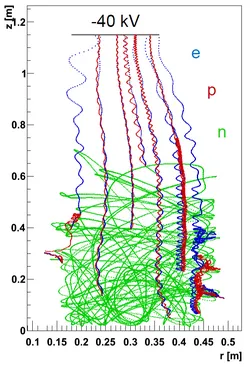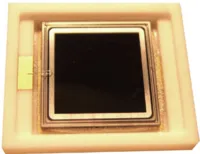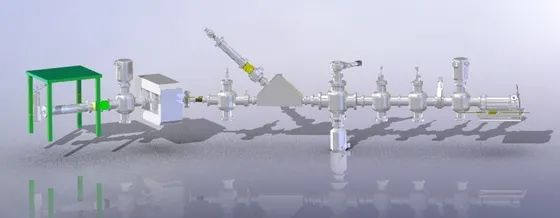Extraction and detection of decay particles
Proton extraction

One method to determine neutron lifetime is counting the number of decay particles during the storage period. This gives directly the exponential decay curve and therefore neutron lifetime. The stored UCN in PENeLOPE will decay in protons, electrons and electron-antineutrinos. The decay-protons are guided by magnetic field lines to a detector on top of the trap. Due to their small initial energy of only up to 751 eV they need to get post-accelerated. This is achieved by setting the detector on an electrostatic potential of about 40 keV.
Detector solutions

Nevertheless a detector counting low-energy protons in high magnetic fields and at cryogenic temperature on large area is not trivial. For statistical reasons the quantum efficiency should be not much lower than 100%. One possible detector solution is the use of pure CsI crystals as scintillation material. The produced photons are guided to the outer side of the crystal, were they are read out by (Geiger mode) avalanche photodiodes. Additionally different detector types like silicon pixel detector, micro-channel plate or a gaseous electron amplifier are investigated in parallel.
Detector test facility paff
For detector development and characterization the proton accelerator with femto-ampere flux paff is at our disposal providing a beam of protons with energy up to 40 keV. Additionally it is possible to produce 18 keV electrons. The test detector is mounted on the finger of a cold head and can be cooled down to cryogenic temperatures simulating the later conditions the detector has to work at in the future experiment.
